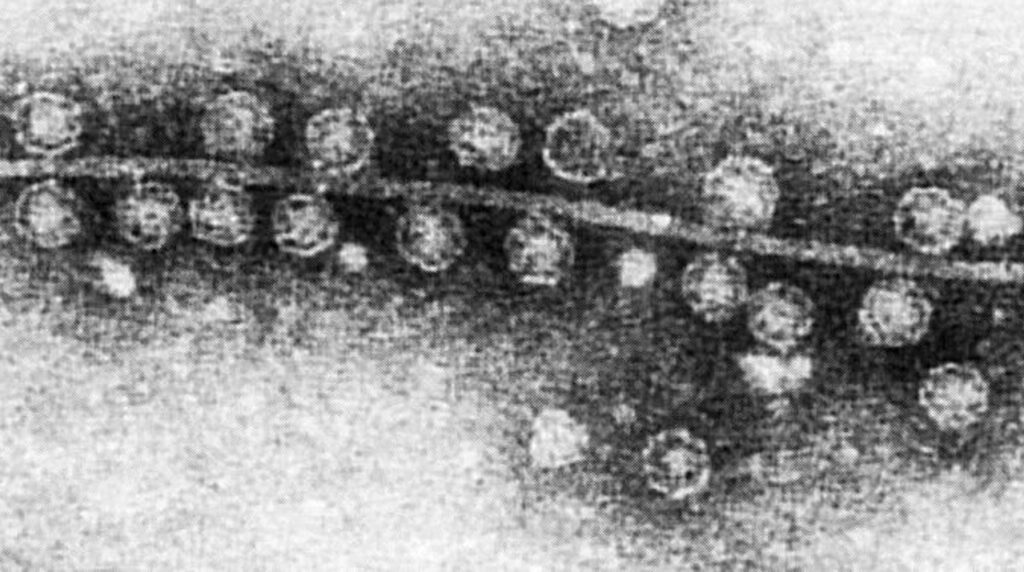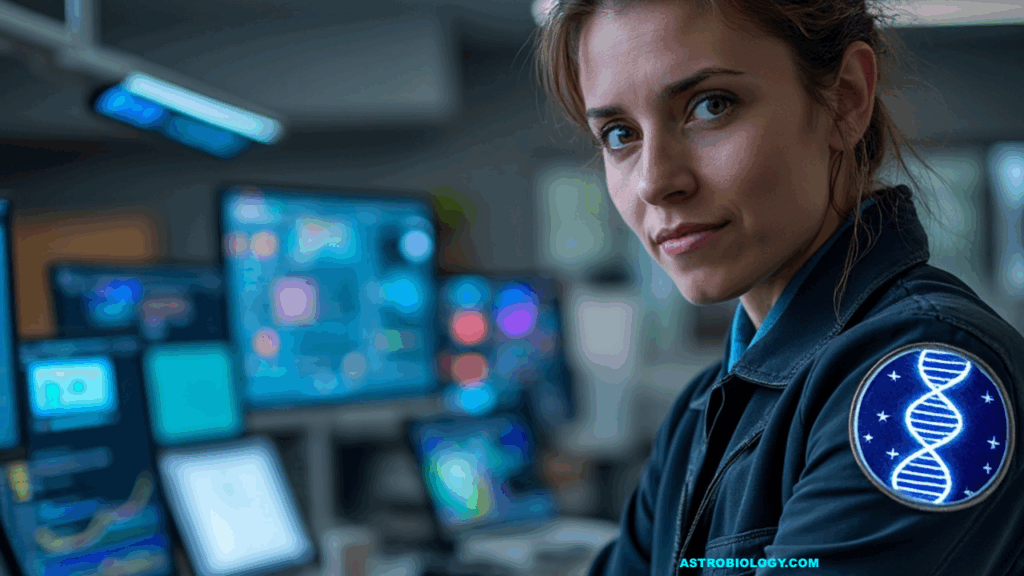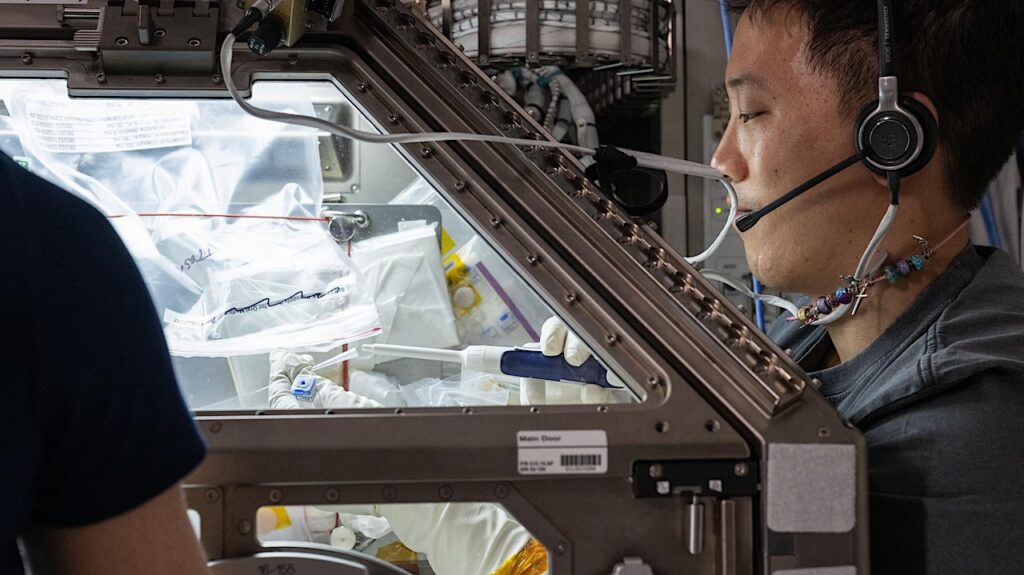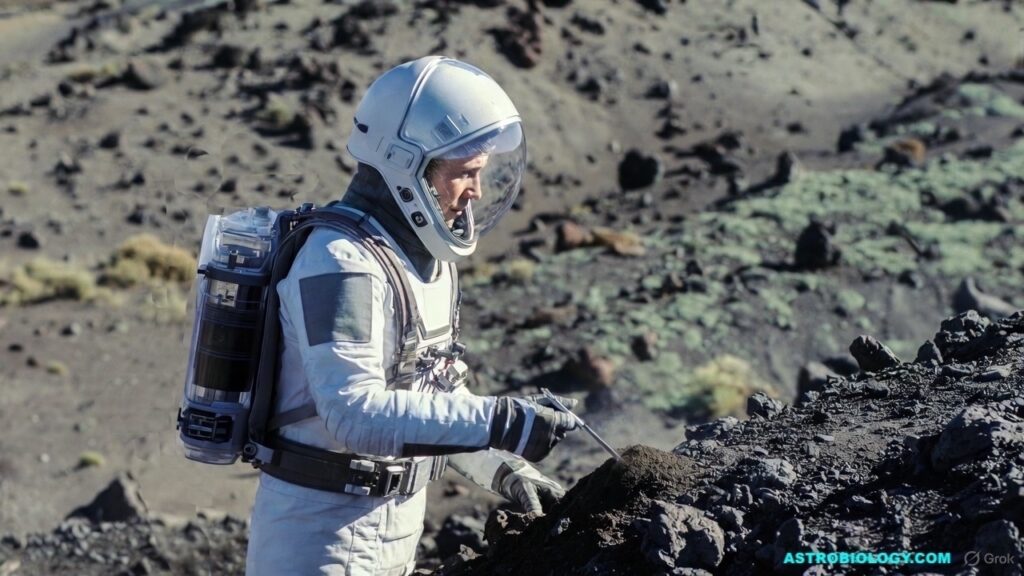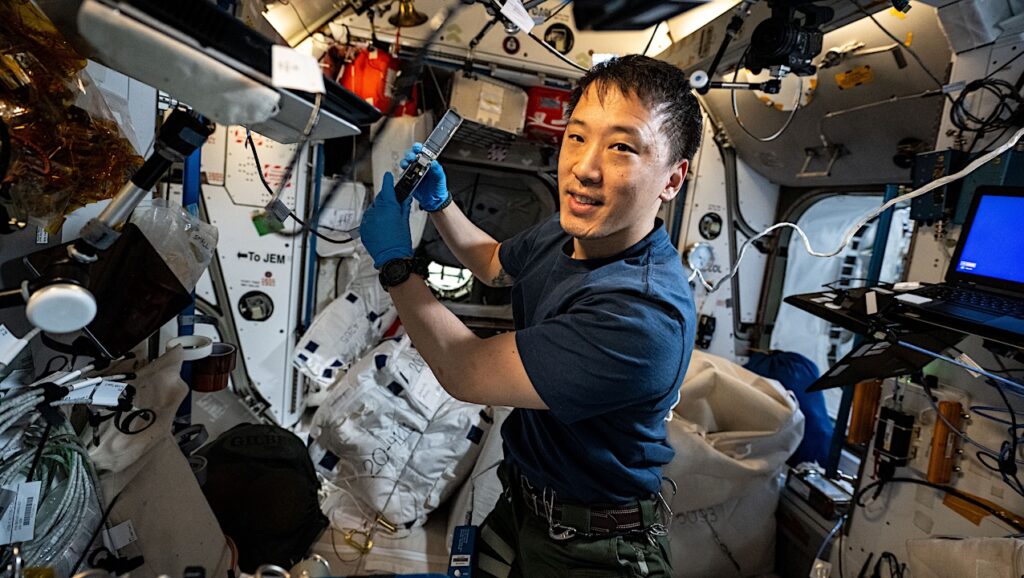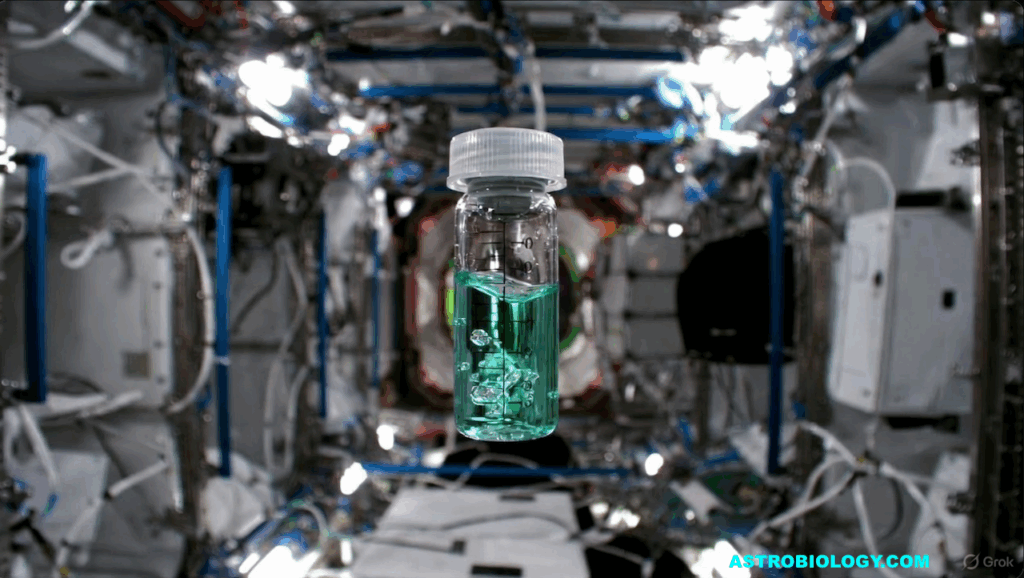NASA Spaceline Current Awareness List #1,080 22 December 2023 (Space Life Science Research Results)
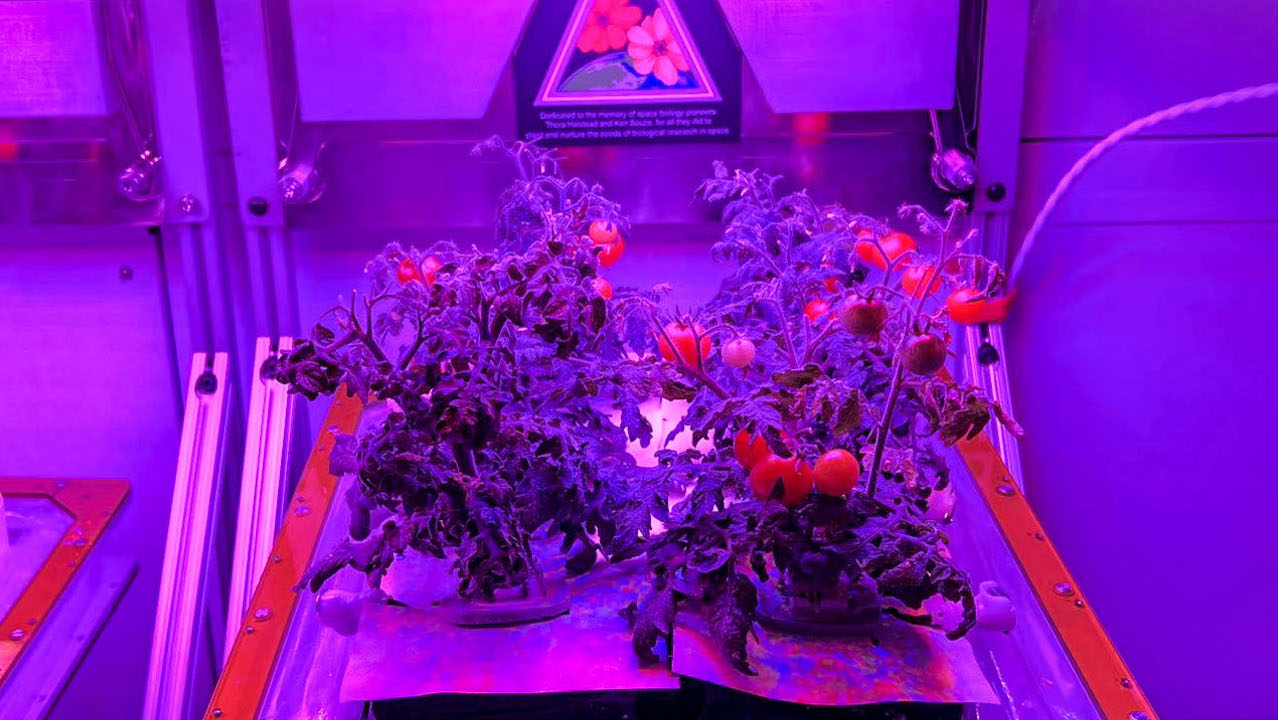
A preflight view of ‘Red Robin’ dwarf tomato growing in growing in Veggie hardware at the Kennedy Space Center – part of Veg-05 experiment. jsc2022e072972 (9/22/2022) — larger image — NASA
SPACELINE Current Awareness Lists are distributed via listserv and are available on the NASA Task Book website at https://taskbook.nasaprs.com/Publication/spaceline.cfm. Please send any correspondence to Shawna Byrd, SPACELINE Current Awareness Senior Editor, [email protected].
Note: The next Current Awareness list #1,081 will be sent on January 5, 2024.
Papers deriving from NASA support:
- Li K, Desai R, Scott RT, Steele JR, Machado M, Demharter S, Hoarfrost A, Braun JL, Fajardo VA, Sanders LM, Costes SV.Explainable machine learning identifies multi-omics signatures of muscle response to spaceflight in mice.npj Microgravity. 2023 Dec 13;9:90.Note: ISS results. This article may be obtained online without charge.
Journal Impact Factor: 5.1
Funding: “Resources supporting this work were provided by the NASA High-End Computing (HEC) Program through the NASA Center for Climate Simulation (NCCS) at Goddard Space Flight Center. We acknowledge support from the Space Life Sciences Training Program. The Open Science Data Repository is funded by the Space Biology Program (Science Mission Directorate, Biological and Physical Sciences Division) of the National Aeronautics and Space Administration. Funding for open access charge: NASA.” - Sharma G, Zee PC, Zea L, Curtis PD.Whole genome-scale assessment of gene fitness of Novosphingobium aromaticavorans during spaceflight.BMC Genomics. 2023 Dec 16;24(1):782.Note: ISS results. This article may be obtained online without charge.
Journal Impact Factor: 4.4
Funding: “This work was supported by NASA EPSCoR grant 80NSSC19M0013 to PDC.” - Flynn-Evans EE, Rueger M, Liu AM, Galvan-Garza RC, Natapoff A, Oman CM, Lockley SW.Effectiveness of caffeine and blue-enriched light on cognitive performance and electroencephalography correlates of alertness in a spaceflight robotics simulation.npj Microgravity. 2023 Dec 19;9:93.PIs: E.E. Flynn-Evans, C.M. Oman, S.W. LockleyNote: From the abstract: “Human cognitive impairment associated with sleep loss, circadian misalignment and work overload is a major concern in any high stress occupation but has potentially catastrophic consequences during spaceflight human robotic interactions. Two safe, wake-promoting countermeasures, caffeine and blue-enriched white light have been studied on Earth and are available on the International Space Station. We therefore conducted a randomized, placebo-controlled, cross-over trial examining the impact of regularly timed low-dose caffeine (0.3 mg per kg per h) and moderate illuminance blue-enriched white light (~90 lux, ~88 melEDI lux, 6300 K) as countermeasures, separately and combined, in a multi-night simulation of sleep-wake shifts experienced during spaceflight among 16 participants (7 F, ages 26-55).” This article may be obtained online without charge.
Journal Impact Factor: 5.1
Funding: “This project was supported by a research grant from the National Space Biomedical Research Institute (PI: Oman, NCC 9-58-NBPF02001) through NASA NCC 9-58, and by grants from the National Center for Research Resources to the General Clinical Research Center and Harvard Clinical and Translational Science Center (GCRC-M01-RR02635, NIH Grant Number 1UL1 TR001102-01, 8UL1TR000170-05, UL1 RR 025758) from the National Center for Advancing Translational Science.” - Liu AM, Galvan-Garza RC, Flynn-Evans EE, Rueger M, Natapoff A, Lockley SW, Oman CM.Effects of caffeine and blue-enriched light on spare visual attention during simulated space teleoperation.npj Microgravity. 2023 Dec 19;9:94.PIs: E.E. Flynn-Evans, S.W. Lockley, C.M. OmanNote: From the introduction: “Safe and successful operation of the International Space Station robotic arm is a complex task requiring difficult bimanual hand coordination and spatial reasoning skills, adherence to operating procedures and rules, and systems knowledge. These task attributes are all potentially affected by chronic sleep loss and circadian misalignment. In a randomized, placebo-controlled, cross-over trial examining the impact of regularly timed low-dose caffeine (0.3 mg kg−1 h−1) and moderate illuminance blue-enriched white light (~90 lux, ~88 melEDI lux, 6300 K), 16 participants performed 3 types of realistic robotic arm tasks using a high-fidelity desktop simulator overnight. Our goal was to determine how these countermeasures, separately and combined, impacted telerobotic task performance and the ability to allocate attention to an unrelated secondary visual task.” This article may be obtained online without charge.
Journal Impact Factor: 5.1
Funding: “This project was supported by a research grant from the National Space Biomedical Research Institute (PI: Oman, NCC 9-58-NBPF02001) through NASA NCC 9-58, and by grants from the National Center for Research Resources to the General Clinical Research Center and Harvard Clinical and Translational Science Center (GCRC-M01-RR02635, NIH Grant Number 1UL1 TR001102-01, 8UL1TR000170-05, UL1 RR 025758) from the National Center for Advancing Translational Science.” - Ferl RJ, Zhou M, Strickland HF, Haveman NJ, Callaham JB, Bandla S, Ambriz D, Paul A-L.Transcriptomic dynamics in the transition from ground to space are revealed by Virgin Galactic human-tended suborbital spaceflight.npj Microgravity. 2023 Dec 20;9:95.Note: From the introduction: “This report details the use of Kennedy Space Center Fixation Tubes (KFTs) as suborbital flight rated equipment to house biology in an experimental setup that allows introduction of a fixative solution to the biology during flight through the actions of a flight crew member. Virgin Galactic successfully completed their first fully crewed suborbital spaceflight, the Unity 22 mission, in 2021 with three KFTs as a wearable science payload to be activated by one of the crew.”
Journal Impact Factor: 5.1
Funding: “This experiment was supported by NASA Flight Opportunities Program (FOP) grant #80NSSC18K1294 to R.J.F. and A.-L.P.” - Hernández CS, Gil A, Zaytouny A, Casares I, Poderoso J, de Lara A, Wehse A, Dave SR, Lim D, Lage E, Alejandre-Alba N.Ametropia detection using a novel, compact wavefront autorefractor.Ophthalmic Physiol Opt. 2023 Dec 12. Online ahead of print.PI: S.R. DaveNote: From the abstract: “Participants underwent an initial measurement with a desktop autorefractor, two subjective refractions (SR1 and SR2) and a final measurement with the QuickSee Free (QSFree) portable autorefractor. Autorefractor performance was evaluated by comparing the differences between the QSFree and each of the subjective refractions with the difference between the subjective refractions (SR1 vs. SR2) using Bland–Altman analysis and percentage of agreement.” This article may be obtained online without charge.
Journal Impact Factor: 4.2
Funding: “Comunidad de Madrid, Grant/Award Number: IND-15478, IND2019/TIC-17116 and IND2020/TIC-17340; Ministerio de Economía y Competitividad, Grant/Award Number: RYC-2016-21125; National Eye Institute, Grant/Award Number: R44EY025452; Translational Research Institute for Space Health, Grant/Award Number: NASA NNX16AO69A.” - Tyson T, Perez D, Lau T, Otero-Millan J.Poster Session I: Distortion of perceived visual space after eccentric gaze holding.J Vis. 2023 Dec 1;23(15):41.Note: This article is a meeting abstract from peer-reviewed Journal of Vision. From the abstract: “Previous studies have shown that rebound nystagmus can be a behavioral probe into the adaptive properties of the gaze-holding mechanism, showing that after prolonged eccentric gaze holding and upon return to central gaze the eye tends to drift towards the previously held position. It is not known whether perception of visual space is also affected by similar adaptation mechanisms. The current study seeks to elucidate if eccentric gaze holding changes the perception of space in a relative spatial judgment task.”
Journal Impact Factor: 1.5
Funding: T. Tyson is affiliated with NASA Ames Research Center.
Other papers of interest:
- Garbacki N, Willems J, Neutelings T, Lambert C, Deroanne C, Adrian A, Franz M, Maurer M, De Gieter P, Nusgens B, Colige A.Microgravity triggers ferroptosis and accelerates senescence in the MG-63 cell model of osteoblastic cells.npj Microgravity. 2023 Dec 16;9(1):91.Note: ISS results. This article may be obtained online without charge.
- Sauer AK, Vigouroux M, Dougherty PM, Cata JP, Ingelmo PM.Pain experience and sensory changes in astronauts during and after short-lasting commercial spaceflight: A proof-of-concept study.J Pain Res. 2023 Dec 11;16:4253-66.Note: ISS results. From the abstract: “Space travel has been associated with musculoskeletal pain, yet little is known about the nociceptive changes and pain experience during spaceflight. This preliminary study aims to investigate the pain experience and sensory alterations in astronauts following a 17-day mission to the International Space Station (ISS) on Axiom Space’s AX-1 commercial space flight.” This article may be obtained online without charge.
- Garcia CA, Suárez-Meade P, Brooks M, Bhargav AG, Freeman ML, Harvey LM, Quinn J, Quiñones-Hinojosa A.Behavior of glioblastoma brain tumor stem cells following a suborbital rocket flight: Reaching the “edge” of outer space.npj Microgravity. 2023 Dec 18;9:92.Note: From the abstract: “The emerging arena of space exploration has created opportunities to study cancer cell biology in the environments of microgravity and hypergravity. Studying cellular behavior in altered gravity conditions has allowed researchers to make observations of cell function that would otherwise remain unnoticed. The patient-derived QNS108 brain tumor initiating cell line (BTIC), isolated from glioblastoma (GBM) tissue, was launched on a suborbital, parabolic rocket flight conducted by EXOS Aerospace Systems & Technologies. All biologicals and appropriate ground controls were secured post-launch and transported back to our research facility. Cells from the rocket-flight and ground-based controls were isolated from the culture containers and expanded on adherent flasks for two weeks.” This article may be obtained online without charge.
- Pittia P, Blanc S, Heer M.Unraveling the intricate connection between dietary factors and the success in long-term space missions.npj Microgravity. 2023 Dec 13;9:89. Review.Note: This article may be obtained online without charge.
- Jia L, Tang Y, Tian K, Ai W, Shang W, Wu H.Effects of hypobaria, hyperoxia, and nitrogen form on the growth and nutritional quality of lettuce.Life Sci Space Res. 2023 Dec 18. Online ahead of print.
- Hicks J, Topolski C, Chavez AA, Castillo HA.Use of a microgravity analog to explore the effects of simulated microgravity on the development of Escherichia coli K12 biofilms.J Microbiol Biol Educ. 2023 Dec;24(3).Note: A clinostat was used in this study. This article may be obtained online without charge.
- Kamkin AG, Mitrokhin VM, Kamkina OV, Kazansky VE, Rodina AS, Zolotareva AD, Zolotarev VI, Sutyagin PV, Mladenov MI, Shenkman BS, Kalashnikov VE, Orlov OI.Simulated microgravity changes the number of mechanically gated and mechanosensitive ion channels genes transcripts in rat ventricular cardiomyocytes.Dokl Biochem Biophys. 2023 Dec 13;512(1):251-5.Note: From the abstract: “The mechanoelectrical feedback in the heart is based on the work of mechanically gated (MGCs) and mechanosensitive (MSCs) channels. Since microgravity alters the heart’s morphological and physiological properties, we hypothesized that the expression of both MGCs and MSCs would be affected. We employed RNA transcriptome sequencing to investigate changes in the gene transcript levels of MGCs and MSCs in isolated rat ventricular cardiomyocytes under control conditions and in a simulated microgravity environment.”
- Li Y, Zhao Y, Zhong G, Xu Q, Tan Y, Xing W, Cao D, Wang Y, Liu C, Li J, Du R, Sun W, Yuan X, Li Y, Liu Z, Jin X, Zhao D, Song J, Wang Y, Kan G, Han X, Liu S, Yuan M, Gao F, Shu J, Li Y, Ling S.Vascular smooth muscle cell-specific miRNA-214 deficiency alleviates simulated microgravity-induced vascular remodeling.Faseb j. 2024 Jan;38(1):e23369.Note: From the abstract: “The human cardiovascular system has evolved to accommodate the gravity of Earth. Microgravity during spaceflight has been shown to induce vascular remodeling, leading to a decline in vascular function. The underlying mechanisms are not yet fully understood. Our previous study demonstrated that miR-214 plays a critical role in angiotensin II-induced vascular remodeling by reducing the levels of Smad7 and increasing the phosphorylation of Smad3. However, its role in vascular remodeling evoked by microgravity is not yet known. This study aimed to determine the contribution of miR-214 to the regulation of microgravity-induced vascular remodeling.”
- Ratushnyy AY, Buravkova LB.Microgravity effects and aging physiology: Similar changes or common mechanisms?Biochemistry (Mosc). 2023 Nov 30;88(11):1763-77. Review.
- Belgrado JP, Bonetti G, Maloizelle-Delaunay J, Stoichkova V, Tartaglia GM, Chiurazzi P, Cecchin S, Bertelli M.Lymphatic circulation in astronauts: Basic knowledge, challenges and perspectives.Eur Rev Med Pharmacol Sci. 2023 Dec;27:119-26. Review.
- Ito Y, Yamagata M, Yamamoto T, Hirasaka K, Nikawa T, Sato T.The reciprocal regulation between mitochondrial-associated membranes and Notch signaling in skeletal muscle atrophy.Elife. 2023 Dec 15;12:RP89381.Note: This article may be obtained online without charge.


